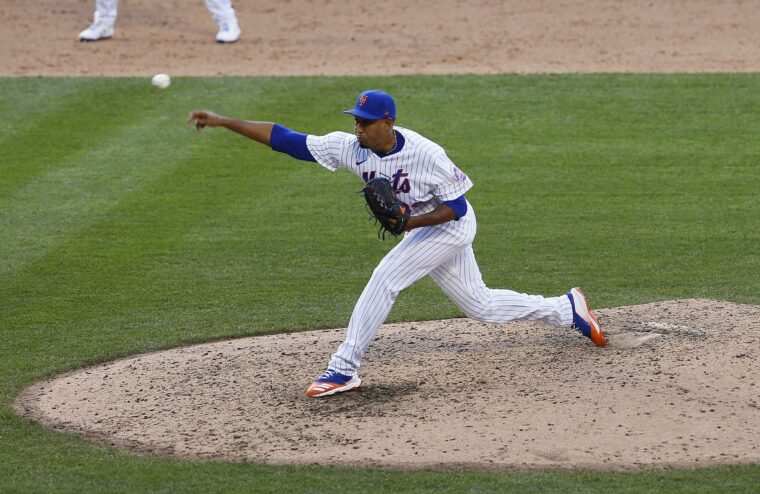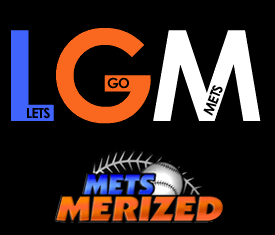
We’ve poured a lot of digital ink recently about the early-season success of the New York Mets’ bullpen, and rightfully so. During the Mets’ recent hot streak, this area of the roster has been doing its fair share to contribute to the bottom line for manager Luis Rojas.
After Wednesday’s win against the Baltimore Orioles, the bullpen’s cumulative 2.1 fWAR through 102.1 innings ranks second in baseball, with the New York Yankees being the only one better. With such a high number this early in the year, there are a number of positive contributors (for reference, the bullpen produced 0.6 fWAR in 235 innings last season). One of the top contributors is closer Edwin Diaz, who has posted a 0.5 fWAR through his first 14.1 innings in 2021.
Diaz’s 3.14 ERA looks inflated at the moment compared to last year’s 1.75 mark, but the runs he’s allowed have come in bunches. Out of his 14 total appearances, only two have included runs getting scored upon him (three on May 2, two on April 10). While it’s still early, it’s interesting to see if there are any trends forming in other areas of a pitcher’s profile, and Diaz is no different. His bounce-back from 2020 has continued into this year, even though he’s been doing it in a slightly different way so far.
A Shift in Pitch Mix
Diaz has been a fastball-slider pitcher since making his big-league debut with the Seattle Mariners in 2016. And while his usage of each offering has varied over the years, the last three seasons coming into 2021 have been more consistent. Here’s a look at how his usage has progressed since his rookie season:

Although we need to take 2020 statistics with a grain of salt because it was shortened season and he only tossed 25.2 innings, it’s notable that Diaz bounced back from a horrific 2019 campaign by throwing his fastball less and his slider more than ever before. This usage essentially mirrored what he did in 2018 when he was viewed as one of the game’s best relievers, fresh off a 3.5-fWAR campaign with 57 saves and a 1.96 ERA.
So, the general logic behind this makes sense. I mean, it’s not a bad idea to try and replicate the pitch usage from your best big-league season. Whether that was intentional or not, it worked, as Diaz was the bullpen’s most valuable reliever and he flashed the kind of ability we were hoping to see the year before.
But this season? His pitch usage has looked quite different. If the season ended today, his 70.1% fastball usage and 29.9% slider usage would be a career-high and career-low, respectively, for a single season.
A Change in Results
With this shift in pitch mix comes a shift in results. Of the five seasons Diaz has participated in prior to 2021, he’s finished with a strikeout rate above 39.0% on four different occasions, breaking the 40.0% barrier three of those times. While his 8.6% walk rate is more in line with his career mark of 8.8%, his 31.0% strikeout rate is much lower than we’re used to seeing (39.1% career rate, 45.5% in ’20).
When looking at Diaz’s pitch splits, it’s very obvious that his slider is the out pitch. After all, opposing hitters have produced a 46 wRC+ against it over the right-hander’s career (34 in ’21) and a 107 wRC+ against four-seamers during that same time (111 in ’21). A peek at the prior two years doesn’t show much of a difference in overall results for the opposition against four-seamers, as they’ve produced a 110 wRC+ in ’19 and 111 in ’20. What’s interesting, though, is the drop in strikeout rate for that offering.
Here’s a look at how the strikeout rate for Diaz’s fastball and slider have progressed between 2016 and 2020:

So far this season, Diaz’s strikeout rate with his slider has mostly fallen in line with what he’s done previously in his career (45.0%), but his strikeout rate on fastballs is flirting with a career-low mark at the moment (24.3%). This could be because Diaz’s four-seamer is landing in the zone at a 61.8% clip, which is much more than it has in the previous two seasons (54.6% in ’19, 53.6% in ’20).
This is helping his walk rate on fastballs, of course, as it’s gone from 14.8% in 2020 to 8.1% currently. If what’s happening now continues in the coming months, Diaz controlling the type and quality of contact from hitters will be crucial. He hasn’t yet allowed a home run, while his 24.2% hard-hit rate allowed falls in line with last year’s rebound, and his 21.2% soft-hit rate allowed is similar to his last two years in Seattle (24.0% in ’17, 22.6% in ’18).
Diaz continuing to solidify the back of the bullpen will be huge for the Mets’ continued success in this area. Even though he hasn’t yet experienced his typical swing-and-miss numbers with that four-seamer yet, it’s obviously still early and things can change. But if it doesn’t, at least he can still see a path to positive contributions through his small sample of playing time thus far.















